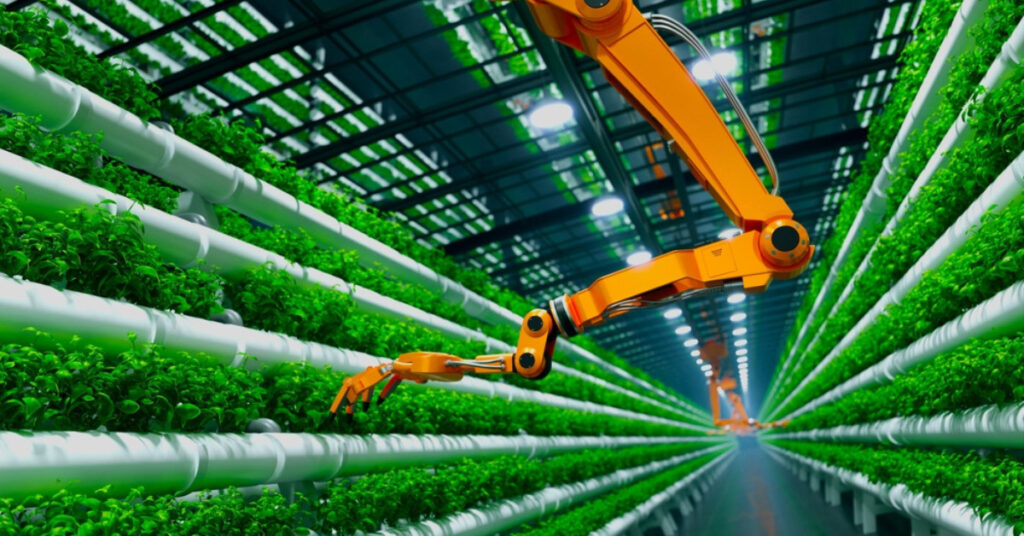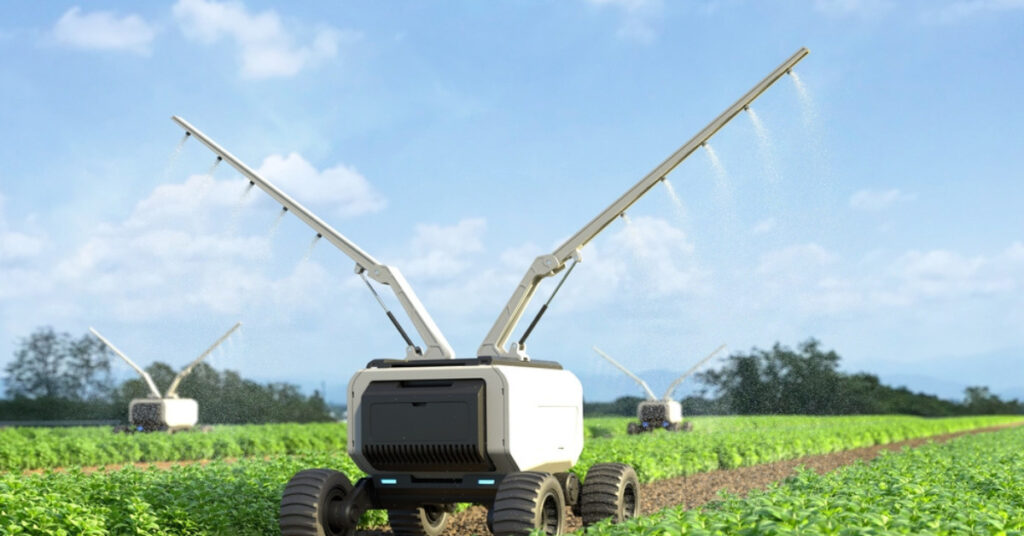From manual tools to the automated machinery that propelled the Green Revolution. Farming has long changed in terms of technology. In order to feed a rising population robotics assistance can increase the requirements accordingly. To solve contemporary problems robotics are used in agriculture.
In todays time robots are essential part of Farming. It aids in labour shortage, improves all operations with less damage. By implementing agricultural robots, farmers may cut back on waste and will increase industry produce and sustainability.

How Do Agricultural Robots Work?
AI, ML, machine vision, and sensors are the technologies that usually robots use. Al and ML can help with activities like crop identification, insect detection, weeding, and harvesting. As the robot’s “eyes,” machine vision detects plants and keeps a watch on variables like moisture, light, and temperature. GPS and navigation systems help in operating planting and spraying.

Advantages of Agriculture Robots
There are a lot of advantages of agricultural automation. Some of them are below:
- Precision from Planting to Harvesting
- Optimizing Plant Growth
- Labor Cost Reduction
- Improved Food Safety
- Adaptation to Climate Change
- Labour Shortage Solutions
- Increased Efficiency
Types of Robots in Agriculture
Specialized Agricultural robots handle tasks from harvesting to fertilizing. They maximize productivity. Below are the types of robots:
Harvesting Robots
Harvesting robots precisely assess crop ripeness and quality. Pick produce without causing any damage as equipped with machine vision and AI. Operate 24/7 that save time.
Weeding Robots
They are equipped with sensors, cameras, and even laser technology. It precisely target weeds. Reducing herbicide use and fostering sustainable Farming.
Seeding Robots
These robots optimize planting by confirming exact seed spacing and depth. It results in improving crop health, and yield potential across large fields.
Fertilizing and Spraying Robots
By precisely targeting plants, these robots use sensors to apply fertilizers and pesticides accurately, reducing chemical use, costs, and environmental impact while supporting healthier crops.
Robotic Greenhouses
It utilizes automated methods that reduce water usage and do away with pesticides to maximize indoor Farming.
Feeding and Milking Robots
Feeding robots allow animals to have individualized diets. On the other hand milking robots work around the clock to precisely milk cows as needed.
Challenges and Limitations in Adopting Robotics
For small scale farmers it would be a barrier due to high investment. Rooted Robotics is currently developing solutions that are scalable in order to overcome this obstacle. One of the technical hurdles is creating robots that can function in a variety of farming settings. It takes constant innovation to get over these obstacles.
Final Words
Robotics provides a way to precisely manage crops, diminish waste, and ease environmental impact. As technology advances, it will surely meet the world’s increasing food demand in a sustainable manner. It will increase effectiveness, sustainability, and yield.
FAQs
What is Robotics in Agriculture?
Using machines that perform farming tasks is robotics in agriculture. It helps streamline agricultural operations for precise output.


